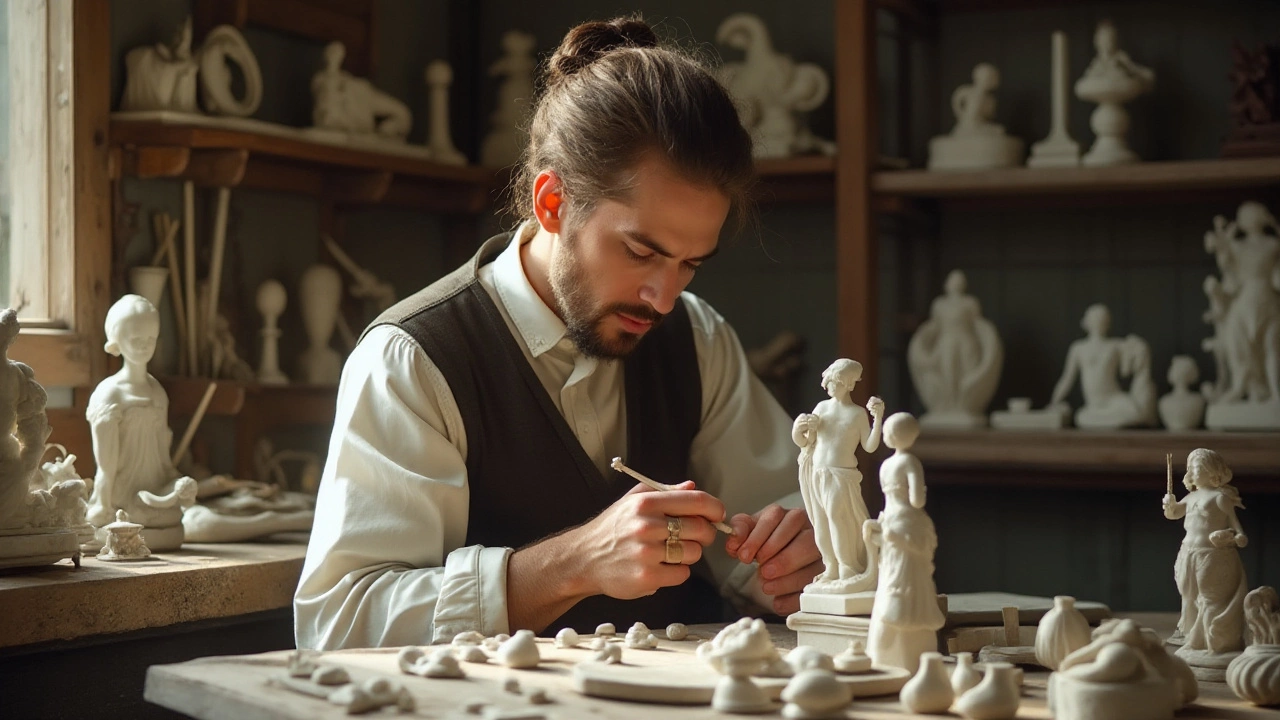Miniature Sculptures: How to Create Tiny Art That Pops
Ever wanted a tiny piece of art you can hold in your hand? Miniature sculptures are perfect for anyone who loves detail but doesn’t have a lot of space. You don’t need a fancy studio or a big budget – just a few basic tools and a bit of patience. Below we’ll walk through the first steps, pick the right materials, and share quick finishing tips so your mini masterpiece looks professional.
Getting Started with Tiny Sculptures
Start with a simple subject: a tiny animal, a miniature food item, or a small abstract form. Sketch your idea on paper first; a quick 2‑inch drawing helps you see the proportions before you begin. When you’re ready, choose a small armature – a thin wire or a toothpick works fine for most projects. Wrap the armature with masking tape to give the clay something to grip.
For beginners, polymer clay is the go‑to material. It stays soft at room temperature, cures in a regular oven, and comes in many colors, so you can skip the painting step if you like. If you’re looking for an even cheaper option, try air‑dry clay or even papier‑mâché for larger, lightweight pieces. Just remember that air‑dry models can shrink a bit, so add a tiny extra for any fine details.
Materials That Won’t Break the Bank
Besides polymer or air‑dry clay, consider using recycled items: bottle caps, old jewelry, or scrap wood. A coffee stir stick can become a tiny tree trunk, while a piece of foam core makes a solid base. For surface texture, everyday objects like a toothbrush, a piece of sandpaper, or a fork can create realistic patterns without buying specialty tools.
When it comes to tools, a basic sculpting set isn’t necessary. A set of kitchen knives, a couple of old paintbrushes, and a fine‑pointed pen can do most of the work. Keep a small container of water nearby to smooth polymer clay, and use a gentle blow dryer on low to speed up drying for air‑dry models.
Finishing your miniature sculpture adds that professional touch. A light coat of clear matte spray protects the surface and reduces fingerprints. If you used polymer clay, a quick polish with a soft cloth brings out a subtle shine. For air‑dry pieces, a thin layer of acrylic sealer helps keep the paint from cracking.
Now you’ve got the basics to start making miniature sculptures that look great on a shelf, desk, or as a unique gift. Experiment with different subjects, mix materials, and don’t be afraid to make mistakes – every tiny flaw can become a charming detail. Happy sculpting!

28 Jan 2025
Small sculptures, often referred to as miniature sculptures, are art pieces that captivate collectors and artists alike through their intricate detail and charm. Subtle yet splendid, these sculptures cover a range of materials and techniques, offering a peek into the history and utility of this art form. From ancient artifacts to contemporary masterpieces, miniature sculptures continue to inspire creativity and innovation in the realm of art. Discover the secrets and stories behind these pocket-sized wonders.
Continue reading...
